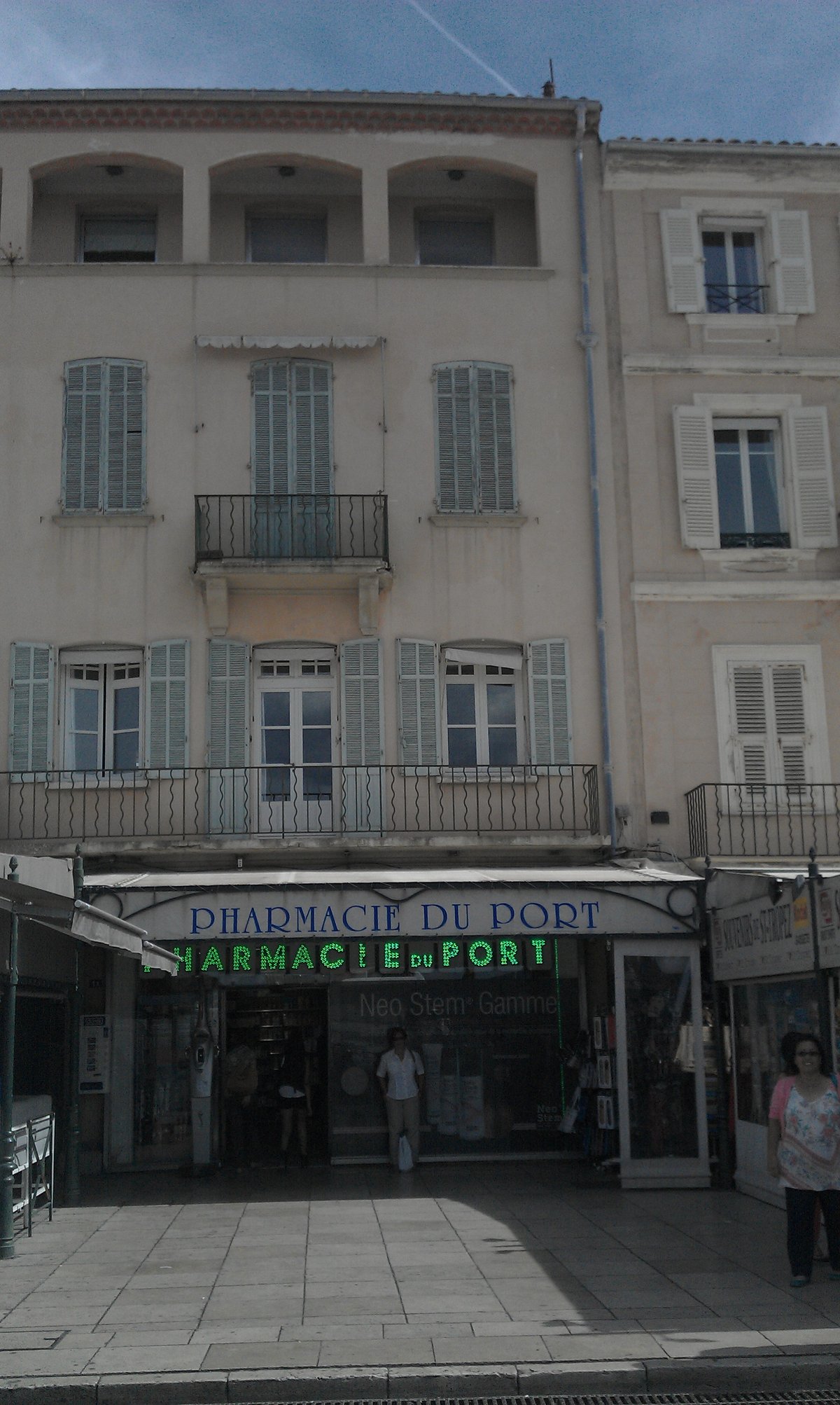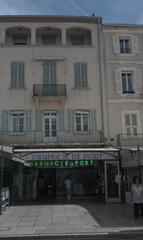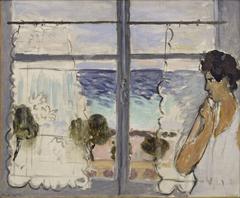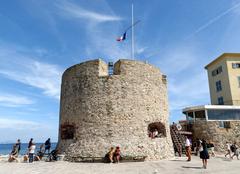
House of the Corsair Saint-Tropez: Visiting Hours, Tickets, and Attractions Guide
Date: 14/06/2025
Introduction
Nestled in the heart of Saint-Tropez’s historic old town, the House of the Corsair (Maison du Corsaire) stands as a powerful symbol of the town’s maritime legacy. This unique site immerses visitors in the world of French corsairs—royally sanctioned privateers whose exploits shaped Saint-Tropez’s fortunes from the Middle Ages through the 19th century. Far from being simple pirates, these corsairs were community defenders, skilled mariners, and shrewd entrepreneurs. The House of the Corsair, with its robust Provençal architecture and evocative exhibits, provides a direct link to this adventurous past, offering an engaging experience for history enthusiasts, cultural explorers, and anyone seeking the authentic soul of Saint-Tropez. (Wikipedia: French corsairs; Explorial: Saint-Tropez Military History; Saint-Tropez Tourisme; Iconic Riviera)
Table of Contents
- Historical Background and Corsair Tradition
- Architectural and Cultural Features
- Role in Maritime Defense and Corsair Activity
- Social and Economic Impact
- Symbolism in Local Identity
- Preservation and Visitor Experience
- Integration with Other Heritage Sites
- Practical Visitor Tips
- Visuals and Media Recommendations
- Frequently Asked Questions (FAQ)
- Conclusion and Call to Action
Historical Background and Corsair Tradition
Origins of the Corsair Tradition
French corsairs, or “corsaires,” were privateers authorized by the crown to attack enemy shipping under a “lettre de marque”—a legal commission that distinguished them from pirates (Wikipedia: French corsairs). This practice was especially vital in Mediterranean towns like Saint-Tropez, which faced frequent threats from foreign navies and pirates throughout the Middle Ages and Renaissance (Beyond.fr).
Corsairs in Saint-Tropez
Saint-Tropez’s coastal position made it a target for raids, but also a prime base for defense and for launching corsair expeditions. After the town’s repopulation by Genoese families in the late 15th century, local mariners formed a militia to defend their new home, setting the stage for a vibrant corsair tradition (Saint-Tropez Tourisme). Corsairs from Saint-Tropez played a significant role in safeguarding local trade and contributing to the prosperity of the community.
Legal Status and Distinction from Piracy
Corsairs operated within a strict legal framework. Their commissions specified which enemies they could target, and offenses against neutrals could result in being declared pirates, subject to harsh penalties (Wikipedia: French corsairs). This legal distinction endowed corsairs with both legitimacy and a sense of duty to their port towns.
Notable Corsairs and Their Legacy
Though most celebrated French corsairs—like René Duguay-Trouin and Robert Surcouf—hailed from Saint-Malo, the corsair legacy runs deep in Saint-Tropez’s local lore. The town’s defenders and adventurers left their mark not only on naval warfare but also on the built environment and cultural identity of the region (Wikipedia: French corsairs).
Architectural and Cultural Features
The House of the Corsair epitomizes Saint-Tropez’s blend of defense and domesticity. Its thick stone walls, narrow windows, fortified doors, and strategic placement near the port are all typical of late medieval Provençal architecture (Avignon et Provence). Wrought iron balconies, pastel shutters, and tiled roofs add Provençal charm, while interior spaces feature exposed beams, stone fireplaces, and artifacts from the corsair era.
Inside, the house displays:
- Period furnishings and maritime equipment.
- Original architectural elements such as thick walls and narrow staircases.
- Artifacts and documents related to privateering and local defense.
The artistic and decorative motifs often include maritime symbolism, reflecting the house’s role as both a home and a place of vigilance (Saint-Tropez Tourisme).
Role in Maritime Defense and Corsair Activity
The House of the Corsair was more than a residence—it was a hub for organizing local defense and launching privateering expeditions. The town’s militia and corsairs operated from such buildings, coordinating with watchtowers and the 17th-century Citadel to protect Saint-Tropez from attack (Tourist Platform).
Success in privateering brought wealth and prestige, while also funding the construction of fortifications and public works. The house thus stands as a testament to the community spirit and maritime expertise that defined Saint-Tropez for centuries.
Social and Economic Impact
Corsair activities shaped the town’s social structure and economy. Profits from captured ships boosted local fortunes, supported infrastructure development, and fostered a thriving port community. Wealth from privateering was often reinvested in homes, churches, and civic amenities, leaving a lasting imprint on the town’s urban landscape (Avignon et Provence).
This period also gave rise to enduring festivals and traditions. The Bravade de Saint-Tropez, a major annual celebration, honors the town’s defenders and keeps the corsair spirit alive (Explorial; SeeSaintTropez).
Symbolism in Local Identity
The House of the Corsair is a living symbol of Saint-Tropez’s independence, resilience, and maritime pride. The town’s coat of arms, featuring a galley and a cross, references its corsair and defensive heritage (Saint-Tropez Tourisme). Local folklore and legend are rich with tales of daring corsairs and community triumphs.
Preservation and Visitor Experience
Legal Protections and Restoration
The House of the Corsair is protected as part of Saint-Tropez’s historical patrimony. Restoration efforts focus on maintaining original materials and design elements, while accommodating modern needs such as climate control and accessibility (French Quarter Mag).
Community Involvement
Local owners, cultural associations, and the French Ministry of Culture collaborate to preserve the town’s architectural integrity. Some historic homes are used for cultural events or as boutique accommodations, ensuring ongoing maintenance and public engagement.
Visiting Hours and Tickets
- Summer (May–September): Generally open daily, 10:00 AM to 6:30 PM.
- Off-season (October–April): Reduced hours, typically Wednesday to Sunday, 10:00 AM to 5:00 PM.
- Tickets: Adult admission €5–€8; discounts for seniors, students, and children; free for children under 12. Purchase onsite or via the official tourism website.
- Guided Tours: Available in several languages, offering in-depth insights.
- Special Events: Check the calendar for exhibitions and cultural programs, especially during the Bravade festival (SeeSaintTropez).
Accessibility
Due to historic architecture, accessibility is limited (narrow staircases, uneven floors). Some areas feature ramps or elevators, but visitors with mobility needs should contact the site in advance (Saint-Tropez Tourisme).
Guided Tours and Booking
Guided walking tours are highly recommended. Book in advance through the tourism office or local providers for a deep dive into Saint-Tropez’s maritime past.
Integration with Other Heritage Sites
The House of the Corsair is best appreciated as part of a circuit including:
- La Citadelle and Maritime Museum: Explore fortifications and naval exhibits (CityXee).
- Portalet Tower and Old Port: Discover watchtowers and the historic harbor (Tourist Platform).
- Musée de l’Annonciade: Experience Saint-Tropez’s art heritage (Iconic Riviera).
Walking tours frequently connect these sites, revealing the layers of defense, trade, and artistic life woven through the town (The Crazy Tourist).
Practical Visitor Tips
- Location: In the old town, near the port and La Ponche quarter; use comfortable shoes for cobbled streets.
- Parking: Limited; public lots fill quickly in high season—arrive early or use public transport (Provence Lovers).
- Best Time to Visit: Early mornings or shoulder seasons (May–June, September) for fewer crowds (Therepublicofrose.com).
- Dining: Sample local specialties like tarte tropézienne at nearby cafés (Happy Little Traveler).
- Shopping: Browse for maritime-inspired crafts in local boutiques.
Visuals and Media Recommendations
- Photography: Capture the façade, stonework, and interior details; use alt text like “House of the Corsair Saint-Tropez stone façade” for accessibility and SEO.
- Interactive Maps: Highlight the house’s location within the old town and walking tour routes.
- Virtual Tours: Check the site or tourism office for digital experiences.
- Media: Look for videos or high-resolution images on the Saint-Tropez tourism website.
Frequently Asked Questions (FAQ)
Q: What are the House of the Corsair’s opening hours?
A: Typically 10:00 AM to 6:30 PM (summer); shorter hours off-season. Confirm on the official website.
Q: How much are tickets?
A: €5–€8 for adults, discounts for seniors, students, and children; under 12 free.
Q: Are guided tours available?
A: Yes, in multiple languages. Book onsite or in advance.
Q: Is photography allowed?
A: Yes, but flash may be restricted to protect exhibits.
Q: Is the site accessible for visitors with disabilities?
A: Accessibility is limited; contact ahead for assistance.
Conclusion and Call to Action
The House of the Corsair is not just a relic of the past but a vibrant gateway to understanding Saint-Tropez’s enduring spirit of adventure and resilience. Explore its storied halls, take part in guided tours, and immerse yourself in the traditions that continue to shape the town. For up-to-date information on hours, tickets, and special events, visit the official tourism website. Enhance your experience with the Audiala app, which offers exclusive tours, tips, and real-time updates. Follow us on social media for more inspiration and to stay connected with Saint-Tropez’s rich cultural life.
References and Further Reading
- French corsairs, 2024, Wikipedia
- 10 Fun Facts About Saint-Tropez You Didn’t Know, 2024, Explorial
- History of Saint-Tropez, 2024, Beyond.fr
- Saint-Tropez Tourisme Official Site, 2024
- Historical Places of Saint-Tropez: The Best Places for Guests, 2024, Tourist Platform
- Saint-Tropez History: Pirates, Painters, and More, 2024, Iconic Riviera
- Things to Do in Saint-Tropez, 2024, The Crazy Tourist
- Best Things to Do in Saint-Tropez, 2024, Therepublicofrose
- Is Saint-Tropez Worth Visiting?, 2024, Explore the Riviera
- The Citadel of Saint-Tropez, 2024, CityXee
- What’s On in Saint-Tropez June, 2024, SeeSaintTropez
- Best Things To Do In St Tropez France, 2024, Happy Little Traveler
- Preserving French Heritage: Restoration and Conservation Efforts, 2024, French Quarter Mag
- St Tropez Architects Behind Town’s Most Refined Properties, 2024, e-Architect
- The History of Saint-Tropez, 2024, Vayabo
- Saint-Tropez Travel Guide, 2024, Iconic Riviera
- Saint-Tropez Art and Culture, 2024, Saint-Tropez Tourisme


